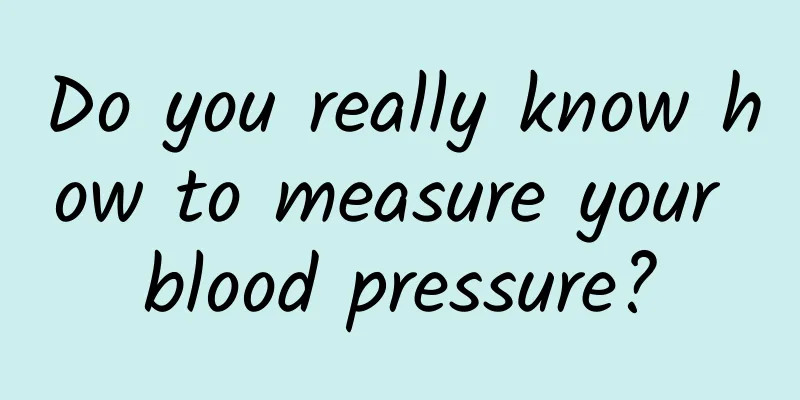Do you really know how to measure your blood pressure?

|
Hypertension refers to excessive pressure of blood on blood vessel walls. Normal blood pressure should be less than 120/80 mmHg. The average of all blood pressure readings measured at home for 5-7 consecutive days without the use of antihypertensive drugs is ≥135/85 mmHg, or the systolic blood pressure (SBP) is ≥140 mmHg and/or the diastolic blood pressure (DBP) is ≥90 mmHg on three occasions in the clinic without the use of antihypertensive drugs on different days. Hypertension can be diagnosed. Hypertension, as an "invisible killer", is often ignored by people. Hypertension is closely related to many complications. The risk of coronary heart disease in hypertensive patients is 2.6 times higher than that of normal blood pressure patients. Hypertension is also one of the important risk factors for the first and recurrence of stroke. Generally, kidney damage will occur after hypertension persists for 10-15 years, and some patients even develop renal failure. So, if you want to understand your blood pressure and actively prevent and treat hypertension, you must monitor your blood pressure. How to measure blood pressure correctly? We can follow the following two charts: For easy memory, the following formula is summarized: empty your urine before measuring, sit quietly at the table for a while, measure your forearm at the same level as your heart, and put your feet naturally on the ground. Take the average of 2-3 times and remember it twice a day. Because most people's blood pressure in the right upper limb is slightly higher than that in the left upper limb, the blood pressure is usually measured in the right upper limb. If it is the first measurement, the blood pressure of both upper limbs is often measured together. If the difference between the measurement results of the left and right arms is within 10mmHg, subsequent measurements are generally based on the blood pressure of the upper limb with the higher value. If the difference in blood pressure between the two upper limbs is greater than 20mmHg, you need to see a doctor in time to rule out vascular stenosis. If the blood pressure is elevated after measurement, you need to see a doctor and decide whether antihypertensive treatment is needed and the speed and magnitude of blood pressure reduction will be determined based on whether there are comorbidities. The action of paying attention to blood pressure will never stop, let us work together and cheer for a healthy life! |
>>: Will people definitely get cataracts when they get older?
Recommend
Can women eat passion fruit during menstruation?
Women have a lot of dietary considerations during...
What to do if pregnant women have kidney stone pain
Kidney stones are a common complication during pr...
Ovulation test paper weak positive before menstruation
In order to know whether they are in their ovulat...
What prenatal check-up should I do at 36 weeks?
You can have a prenatal check-up at 36 weeks to c...
Effects of Jinshuibao capsules on women
Jinshuibao Capsule is a traditional Chinese medic...
What should pregnant women pay attention to when they have stomach cramps?
What should pregnant women pay attention to when ...
Women always feel the urge to urinate but don't urinate much
Our bladder stores some urine on a daily basis. O...
How long does the stomach ache last after medical abortion?
Surgical abortion requires the use of tools for c...
Pregnant woman vomiting to determine the gender
Pregnancy reaction refers to some adverse symptom...
Inhomogeneous echo in scar after medical abortion
After medical abortion, if the scar is uneven in ...
What are the causes of cervical erosion?
For women, reproductive organs such as the cervix...
【Health Lecture】Five prescriptions for cardiac rehabilitation --- exercise prescription
In order to ensure the popularization effect of l...
What to do if you have uterine polyps
What should I do if I have uterine polyps? Nowada...
Mozi Salon: Protecting the "oil road" of life with technological innovation
If each of us is a car running forward, then our ...









